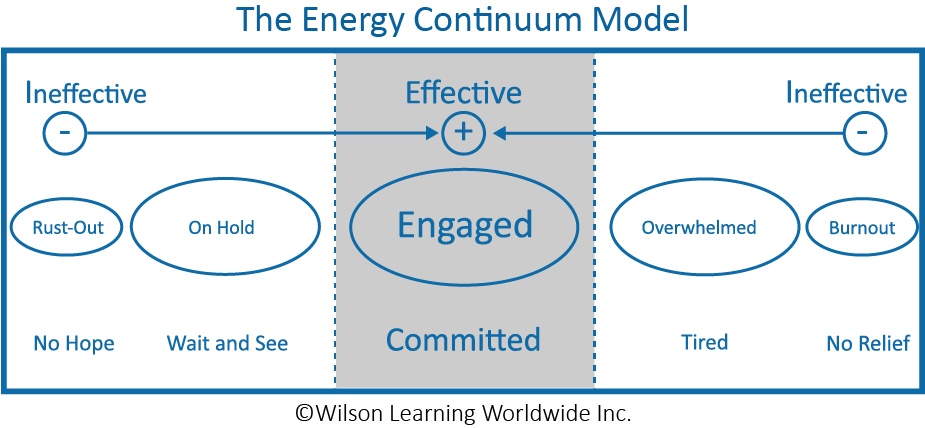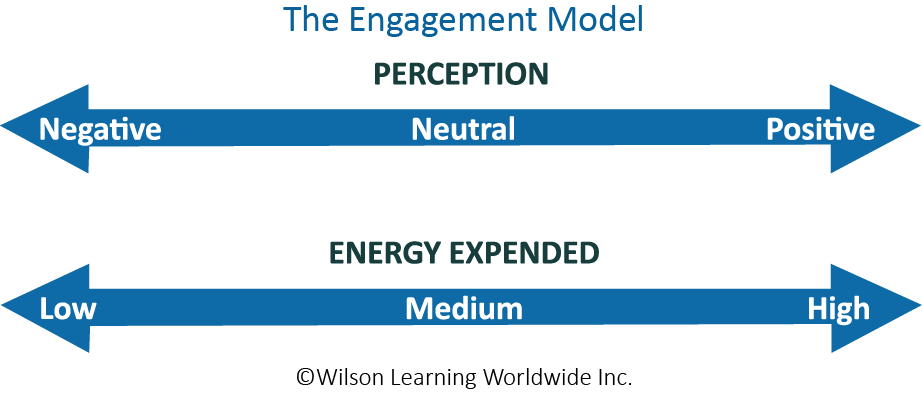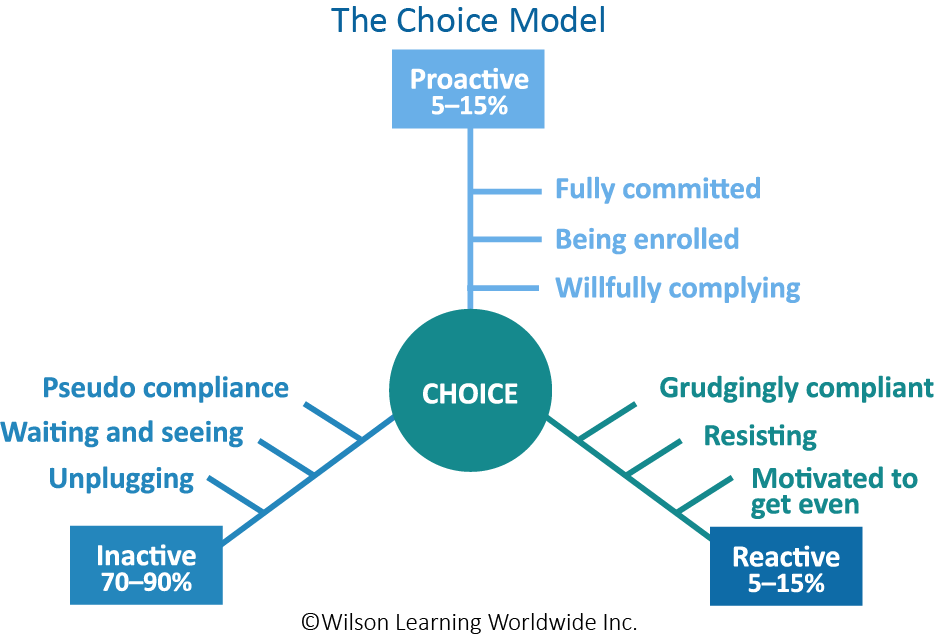Leadership as the Catalytic Force Behind Workforce Reengagement
Recreating a Culture of Engagement

If this title intrigued you, you are likely aware of the potential force leadership has in reengaging your workforce. This begs the question: What causes employees to disengage in the first place? As we explore this issue, you’ll learn what you can do to spark the catalytic force in leadership to recreate a culture of engagement.
What Happened to My Once-Engaged Employees?
At the heart of the challenge to reengage employees who were once engaged is to recognize and understand what disengages employees in the first place.
If low job satisfaction is the cause, there may be a number of contributing factors—routine, unchallenging jobs; mismatched jobs that don’t play to individuals’ strengths; job tasks that simply aren’t enjoyable; missing tools or skills to do the job successfully; and/or jobs that feel like a dead end, with no perceived future for professional development.
That’s a long list with some mighty significant factors that can easily lead to disengagement. While awareness of these factors concerning job fit, job challenge, and job engineering is important, this is not our focus; instead, our focus is on how to encourage leadership development and employee engagement, despite these setbacks.
So, let’s consider the factors that cause disengagement—namely, moving through change and toxic leadership—and then what to do about it.
Moving Through Change, in All Shapes, Forms, and Velocities
The fundamental premise of how change affects an organization is simple: if employees perceive the change as primarily a gain, or a positive move for the organization and them personally, the process of moving through change essentially isn’t an issue. Even though the change stirs the pot and may create challenges, employees stay engaged.
On the other hand, if the majority of employees perceive the change as a loss for them personally, disengagement is likely, with employees becoming stuck in the change rather than moving through it. They anticipate what they will no longer have as a result of the change. Dealing with the complexities and adapting to the changes becomes far more difficult.
For organizations trying to create and sustain strategic advantage in today’s rapidly changing environment, I find this insight from Richard D’Aveni to be most provocative:
“As competitive cycles have shortened, the need to rapidly develop new advantages has increased. It has become more important for companies to focus on generating their next advantages even before their current advantages erode.”
The velocity of change and rapid development required to create new advantages inside of shortened competitive cycles can be highly energizing, strategically challenging, and result in a “never the same day twice” exciting kind of work environment. Or, for employees, it can be potentially exhausting. Gain? Loss? If an organization is frequently changing, the result can be in a form of fatigue, leading to more chronic and ongoing disengagement.

We have illustrated what can happen to employees who experience change in all shapes, forms, and velocities on the Energy Continuum:
Remaining engaged is the sweet spot of the continuum; when employees are engaged, effectiveness is at its peak and commitment is high. For any change initiative to be executed and succeed, the majority of the workforce needs to be engaged.
When frequent change leads employees to feel overwhelmed, energy flows to the right of the center on the continuum. This can happen for several reasons, often when employees feel like they have lost control of their “self.” If the conditions that led to this feeling aren’t corrected, employees can begin to feel occupational burnout. Employees may then conclude they just cannot give any more energy, leading to disengagement.
Energy flow to the left on the continuum occurs when employees put their energy on hold. When they put their energy on hold, they disengage. Yes, they put in their time, but not their positive, discretionary energy. The primary trigger for this is the perception of loss due to change, second only to fatigue. Rust-out occurs when employees psychologically unplug from the organization. They cannot wait until the end of the workday and whatever energy they have remains undiscovered.
Toxic Leadership
When toxicity seeps into the workplace from organizational leadership, it produces powerful factors that lead to employee disengagement. When an employee feels his or her boss is toxic and is depleting energy—glance back at the Energy Continuum—you can imagine even the most committed, engaged employee’s energy drains to the left or right of center on the continuum.
Toxic leadership practices can occur when good or exceptional performance is not recognized or rewarded, or when a coworker’s poor performance is not addressed. It produces an environment in which employees believe they aren’t involved or informed, or feel unsupported, unheard, or unvalued. When employees believe their manager doesn’t care, employee engagement scores start traveling down a slippery slope.
Before we get to the antidote to toxic leadership, let’s take a step back and revisit what employee engagement means.
What Is Engagement?

If we can share a clear understanding of how an engaged employee shows up, we can better grasp what leaders need to focus on to reignite a culture that supports full engagement.
Employees consciously or unconsciously choose their level of engagement. This may be decided based on their perception of the change, or by the request being made of them and how much energy or effort they believe they should invest in that request. An engaged employee chooses a positive perception and gives high discretionary energy. It’s worth noting that this is a choice an employee makes.
The Choice Model

When determining how to use their energy, individuals can choose to be proactive, reactive, or inactive.
“Proactive” employees choose to expend energy in a positive way. The varying degrees of how that is exhibited can be described as willfully complying, being enrolled, and fully committed.
“Reactive” employees choose to use their energy to oppose or argue against change. Again, there are three varying degrees: grudgingly compliant, resisting, and motivated to get even.
The choice to be “inactive” is a form of disengagement. It occurs when an employee chooses to withhold his or her energy, or to be in a period of waiting. The three degrees of inactive are pseudo compliance, waiting and seeing, and unplugging.
Our research shows that up to 80% of employees reside in this inactive space; this is where energy might be draining out. If you are trying to execute any change initiative—whether it’s a great new strategy, a sound vision, or a well-thought-out new plan—if 80% of your employees are inactive and lie waiting in the weeds to see what might happen next, change simply won’t happen.
That is a dilemma. And, if that’s the case, what kind of leadership influences employees’ choices? We asked. We polled thousands of people in many global organizations, asking: “What would it take for you to stay engaged or get reengaged?” The top response was: “A leader’s example.”
If leaders can either act like faucets and pour energy into the organization or act like drains and take energy out, what kind of leadership understands what it means to give energy rather than take it away?
Leading with Both Essence and Form
Effective leadership that supports a culture of full engagement requires the development of leadership Essence and Form.

Leaders develop their Essence by clarifying their purpose for being a leader and their leader philosophy, beliefs, and values. At the core, Essence is the quality of being a leader. Form is what a leader says or does. It represents those decisions, actions, and behaviors that demonstrate the leader’s Essence. Highly effective and respected leaders are intentional, knowing what they want to BE as a leader. This shapes what they need to DO as a leader, making Essence (character) the foundation upon which their Form (skills) play out.
To genuinely and effectively foster a culture of full engagement, leadership has to understand that the example they lead with greatly influences how employees choose to engage.
If leaders act on signals or cues from external sources, like the influence of other people, and measure their success by their title, position, or appearance, they are relying on “approval” from others and lack depth in their own internal values. If, on the other hand, leaders focus on internal signals, like their unwavering values and beliefs, and measure their success by the effectiveness and contribution of others, they live their life on “purpose.”
Getting Energy Back: Reengaging the Organization
The catalytic force behind workforce reengagement comes from five elements that directly influence both of the dimensions of engagement—perception and energy expended. These elements influence the choices employees make, leading to high engagement.
Creating a Culture of Engagement: Five Elements
- Perceived Opportunity
- Personal Accountability
- Connectedness
- Inclusion
- Validation
Companies with engaged employees see culture as a cause rather than an effect, and leaders are expected to take responsibility for creating a culture that makes it easy for employees to engage. They start by focusing on these five elements and take the following key actions.
1. Perceived Opportunity
Engagement happens when people feel they are a part of something important and have something to believe in.
Employees want to understand what the future holds and want to feel a sense of hope. What can they get excited about in the future? Without a sense of future opportunity to move toward, they will live in the loss rather than move through it.
Key actions leaders can take:
- Focus on creating the potential for the organization—realistic optimism.
- Communicate the organizational vision, mission, and strategy in the context of opportunity and potential.
- Explain how individuals contribute value to the organization’s ability to realize its potential.
2. Personal Accountability
Engagement happens when people are expected to give their best and know what they are being held accountable for. When this is the case, personal accountability increases.
Employees want their questions answered: “As a result of the changes, what do you expect of us? How will we be held accountable?” Employees want to know how the change will impact them and what leadership expects of them.
Key actions leaders can take:
- Ensure performance goals and behavioral expectations are clear.
- Overtly articulate expectations—hold people accountable.
- Clarify what individuals will be held accountable for so they can then hold themselves personally accountable.
3. Connectedness
Engagement happens when people feel connected with one another, focus on mutual interest, and operate with shared responsibility.
Employees want to feel connected to one another. They want to feel they’re part of a collaborative environment, supporting one another.
Key actions leaders can take:
- Engagement is sustained by trust and support from colleagues.
- Facilitate a high level of connectedness among and between people.
- Foster a mindset of collaboration based on mutual interest and shared responsibility.
4. Inclusion
Engagement happens when people are well-informed, involved, and have an opportunity to openly express thoughts and feelings. Simply stated, people want to feel “in” on things.
Employees want to feel included. They want to participate in authoring the future. All aspects of communication come into play: increased communication, the chance to provide input, the opportunity to discuss issues and ask questions, and the chance to be heard and involved.
Key actions leaders can take:
- Inclusion naturally creates engagement. Suppressed communication naturally creates disengagement.
- Establish systems that ensure information is always flowing and people are informed.
- The most important factor in sharing information is having a culture of trust.
5. Validation
Engagement happens when people feel they really matter—that they have a valued place in the organization.
Employees want leaders to care about them. They want to feel they’re an important part of the organization’s future and want to be supported, recognized, and developed.
Key actions leaders can take:
- Ensure there are systems and processes in place to reward, support, and develop people.
- Show interest in people by personally supporting, rewarding, and developing them.
- Ensure people don’t leave the organization because they feel they don’t matter.
Are you helping your leaders take action to implement the elements of engagement?
These five elements shape and foster a culture of engagement. How does engagement show up in your organization?
更多信息请洽021-23571788。







 请填写此表格下载Leadership as the Catalytic Force Behind Workforce Reengagement | Recreating a Culture of Engagement。
请填写此表格下载Leadership as the Catalytic Force Behind Workforce Reengagement | Recreating a Culture of Engagement。





